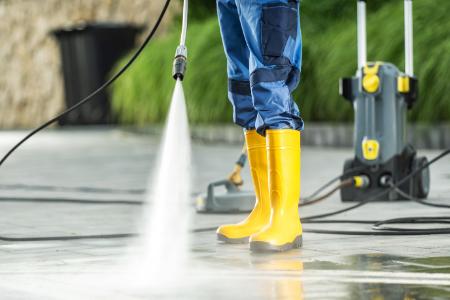Professional Strongsville Fleet Washing Services for a Spotless Fleet
Professional Strongsville Fleet Washing Services for a Spotless Fleet
Blog Article
Easy Actions for Effective Oil Discoloration Elimination From Automobile Surfaces
Effective oil discolor elimination from lorry surfaces is important for maintaining both looks and value. Understanding the type of discolor and the product affected can substantially affect the cleansing procedure. By using the right methods and products, one can attain acceptable results without jeopardizing the stability of the car's surface.
Evaluating the Spot Type
When taking on oil stain removal from vehicles, it is vital to very first examine the type of stain existing. Oil discolorations can differ substantially based upon their beginning, age, and the surface area they have actually permeated. Common sources of oil spots include engine oil, transmission fluid, and also cooking oil, each having distinctive features that affect the elimination process.

Additionally, take into consideration the location of the tarnish. Strongsville Fleet Washing. Discolorations near the engine compartment may show a leak, while those underneath the car can result from drips or spills. By precisely identifying the discolor's beginning and problem, vehicle proprietors can choose the most reliable elimination methods, ensuring successful outcomes without causing additional damages
Event Necessary Products
Getting ready for oil tarnish removal involves gathering the essential supplies to make sure a effective and safe cleaning procedure. The right devices and products can make the difference between an effective outcome and further damage to your automobile's surface area.
Begin by acquiring absorbent products such as paper towels or cloths, which will help in blotting up excess oil. Recipe soap diluted in warm water can serve as a mild choice for lighter discolorations.
A soft-bristle brush or sponge will be essential for applying the cleansing remedy without scraping the surface area. In addition, rubber gloves ought to be used to shield your hands from rough chemicals, while safety and security goggles can safeguard your eyes from dashes.
Finally, a hose pipe or stress washer is recommended for rinsing the location completely after treatment. By setting up these supplies prior to beginning the cleansing process, you set the phase for effective oil discolor removal, making certain that the car's exterior remains unscathed while recovering its appearance.
Pre-Treatment Steps
With the essential materials set up, the emphasis moves to the pre-treatment actions that will certainly help optimize the oil discolor removal procedure. It is vital to determine the kind of surface affected by the oil stain, as various read this article materials might require customized strategies. Clean the location around the stain with water and moderate soap to eliminate any dust or particles, which can hinder the performance of the stain elimination technique
Next, evaluate the oil tarnish's age and deepness. Fresh discolorations commonly react better to treatment than older ones, which might have passed through the surface area a lot more deeply. For older discolorations, consider saturating the area lightly with an appropriate solvent, making certain that it does not damage the underlying material.
Once the surface is prepared, blot the discolor carefully with a tidy, dry cloth or paper towel to take in excess oil. These pre-treatment steps lay the groundwork for successful stain removal, setting the stage for the next phase of the process.
Cleaning Approaches to Utilize
Reliable cleansing approaches are critical for efficiently getting rid of oil stains from vehicles. To begin, pick a degreaser especially created for vehicle use. Use the degreaser kindly to the discolored area, ensuring it covers the oil area completely. Enable it to sit for at the very least 10-15 mins to pass through the stain.
For harder spots, consider making use of a combination of cooking soda and water to develop a paste. Apply this paste directly onto the discolor and scrub with the brush, allowing the baking soda to take in excess oil.
After scrubbing, wash the location extensively with water to remove the degreaser and any type of staying residue - Strongsville Fleet Washing. If the tarnish lingers, duplicating the process may be essential. For sensitive surfaces, constantly test any kind of cleaning option on a low-profile location prior to full application. Following these approaches will certainly make sure a more effective oil tarnish elimination, check over here restoring your useful site car's look.
Post-Cleaning Treatment Tips
After efficiently eliminating oil stains from your automobile, executing correct post-cleaning care is vital to keep its look and avoid future spots. This produces a protective barrier against ecological impurities, consisting of oil.
Following, take into consideration parking your vehicle in shaded areas or making use of a vehicle cover to minimize exposure to sunshine and extreme climate problems. This will assist preserve the stability of the paint and reduce the possibility of future discolorations setting in.
In addition, keep a close eye on areas where oil leakages might take place, such as the engine compartment and undercarriage. Regular assessments can assist you determine potential leaks prior to they come to be problematic.
Verdict

When taking on oil stain removal from cars, it is important to initial examine the type of tarnish existing. Usual resources of oil spots include engine oil, transmission liquid, and also cooking oil, each having unique characteristics that influence the elimination procedure.
Fresh oil stains usually appear darker and slick, while older spots might be lighter and more taken in into the surface. Clean the area around the tarnish with water and mild soap to eliminate any type of dirt or particles, which can prevent the performance of the discolor elimination method.
After efficiently eliminating oil stains from your automobile, implementing appropriate post-cleaning treatment is essential to maintain its appearance and prevent future stains.
Report this page